The North Carolina class was the first of three battleship classes built during the treaty era by the United States. It was overshadowed by the more numerous and more powerful South Dakotas and the incomparable Iowas, but the second ship, Washington, compiled probably the best war record of the American fast battleships, and North Carolina also gave good service during the war.
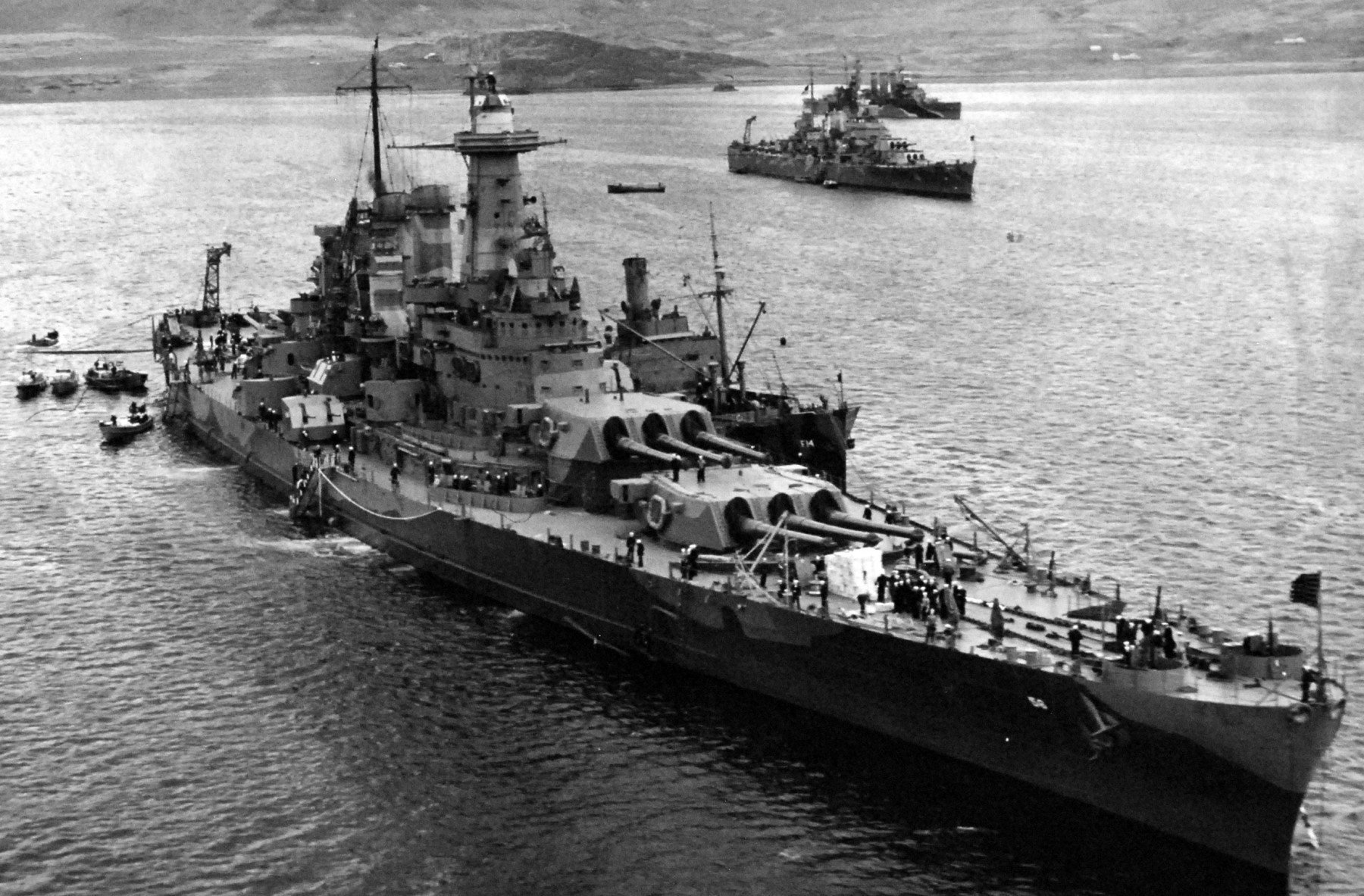
Washington with Home Fleet, 1942
In 1935, with the negotiations for the Second London Naval Treaty looming, the Bureau of Construction and Repair, like its British counterpart, began planning for the ships it would build when the battleship holiday ended. From the first, the main thread of development for the North Carolinas was a radical departure in American capital ship design. All previous US battleships, with the exception of the abortive South Dakota class, had been limited to 21 kts. But the first series of sketch designs were designed to be capable of 30 kts, intended as a reply to the Japanese Kongo class battlecruisers/fast battleships. It was expected that later classes would revert to the American tradition of slow battleships, probably around 23 kts, as the basic logic behind a slow battle line remained sound in the eyes of American strategists.
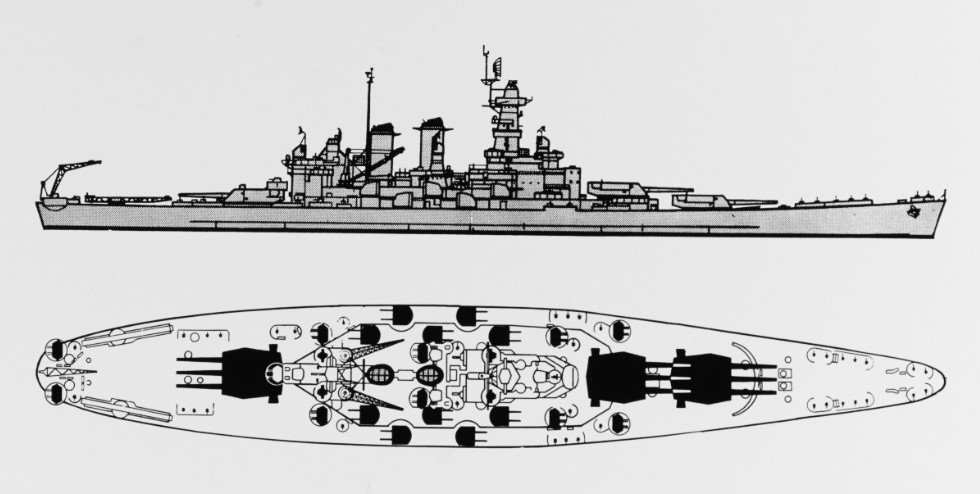
C&R took steps to deal with the new threats that had emerged in the interwar years. All of the new ships received a similar torpedo defense system to the one the later Standard Types had used. However, one bulkhead was deleted, as it was expected that a faster ship could dodge torpedoes. A lower belt to counter the threat of diving shells was considered, but ultimately discarded for reasons of weight.

North Carolina, 1942
Some unusual ideas were considered during development. Some early schemes had an all-forward arrangement much like Nelson, although they were discarded when it was realized they were actually heavier than a more conventional layout under US design standards.1 And a layout with two turrets aft and aviation facilities including a hangar for ten seaplane bombers forward was viewed as having "merits warranting further investigation". Ultimately, it was discarded as the effects of floats on aircraft performance became more pronounced.
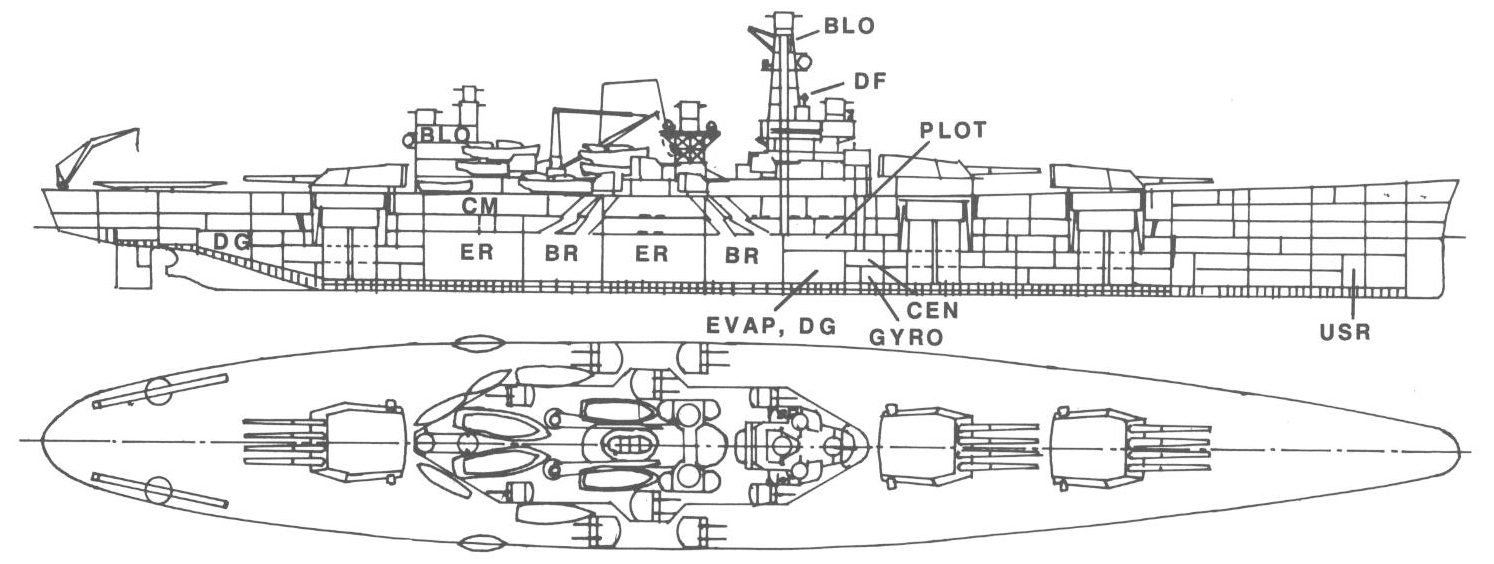
Scheme XVI
Finally, after what Norman Friedman aptly characterizes as a "rather lengthy and erratic design history", including 35 sketch designs, a consensus emerged. Scheme XVI2 was the 35,000 tons characteristic of treaty battleships, with a length of 714', a speed of 27 kts, and an armament of 12 14"/50 guns3 in quadruple turrets. The 12.4" belt sloped at 10°, with a 5.1" armored deck. To get even this much required a very tight design and some maneuvers that stretched the limits of the treaty. American battleships had traditionally carried 100 rounds per gun and an extra 100 for the ship, but first the 100 for the ship were discarded and later the total ammunition capacity was limited to only 900. Or, to be more precise, the extra shells were not included in the standard ammunition load under the treaty, although space was reserved for them in time of war.
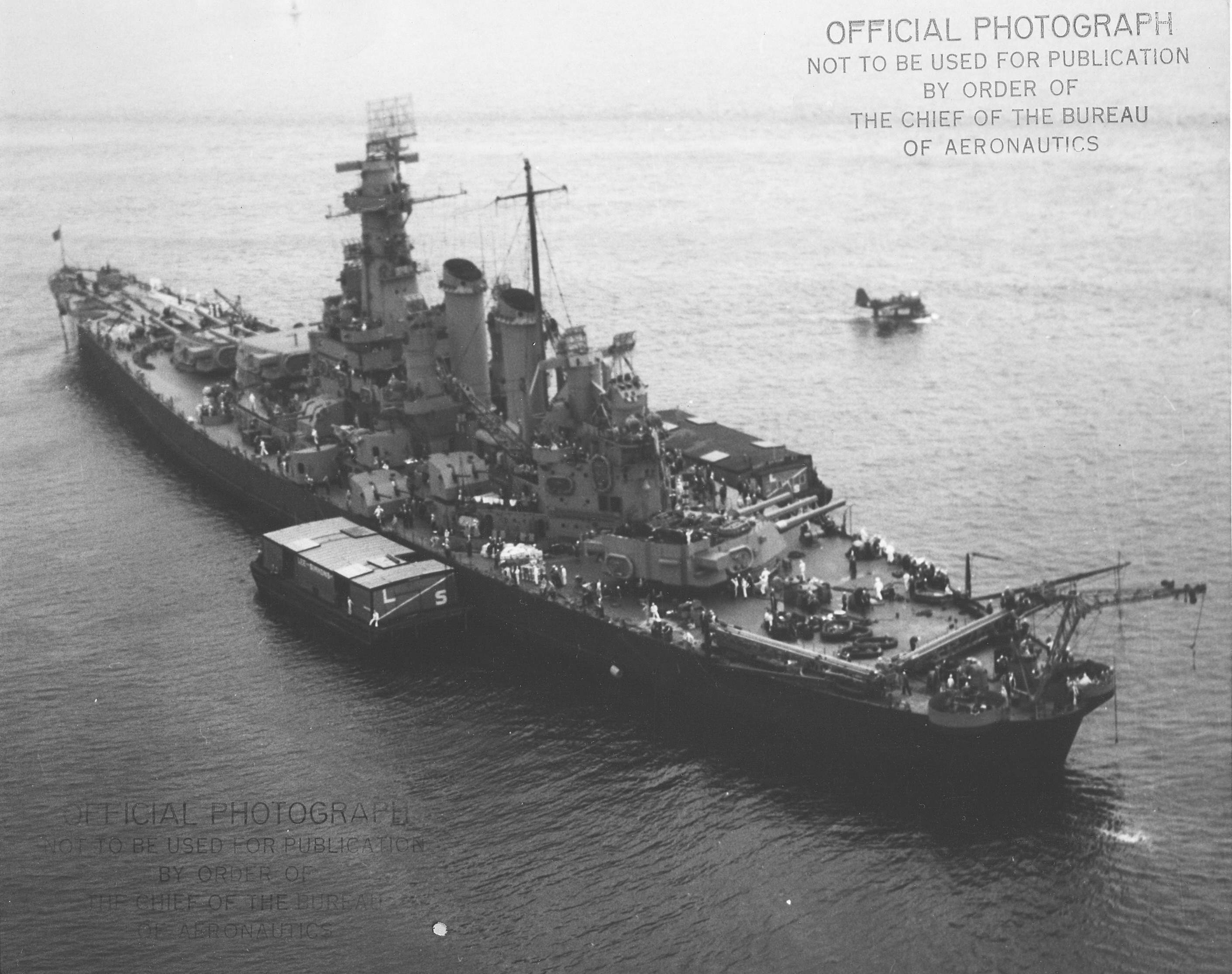
Washington in 1942
However, after the design was almost accepted, the General Board decided that it wasn't quite happy. The ship was seen as too slow to operate usefully with the carriers, and too lightly armored for the battle line. The ship was stretched to 725' and given more power to make 30 kts, at the cost of one gun and a belt of only 10.1", placing the inner edge of the immune zone at 25,000 yards. Another gun could be traded for an additional 3.4" of belt armor, moving the IZ in to only 18,700 yards. But Admiral Joseph Reeves was not satisfied with this, and managed to lobby the Chief of Naval Operations (and acting Secretary of the Navy) William Standley to overturn it, and select instead a close relative of Scheme XVI. The belt was thinned to 11.2" (immune at 23,000 yds), but internal patches of armor up to 3.75" thick were placed over the magazines, providing another 4,000 yards of protection for them, as well as mitigating the threat of underwater shell hits. It was discovered that the wave pattern along the side of the ship would have left the belt dangerously shallow, so its lower edge was countoured to match said pattern.
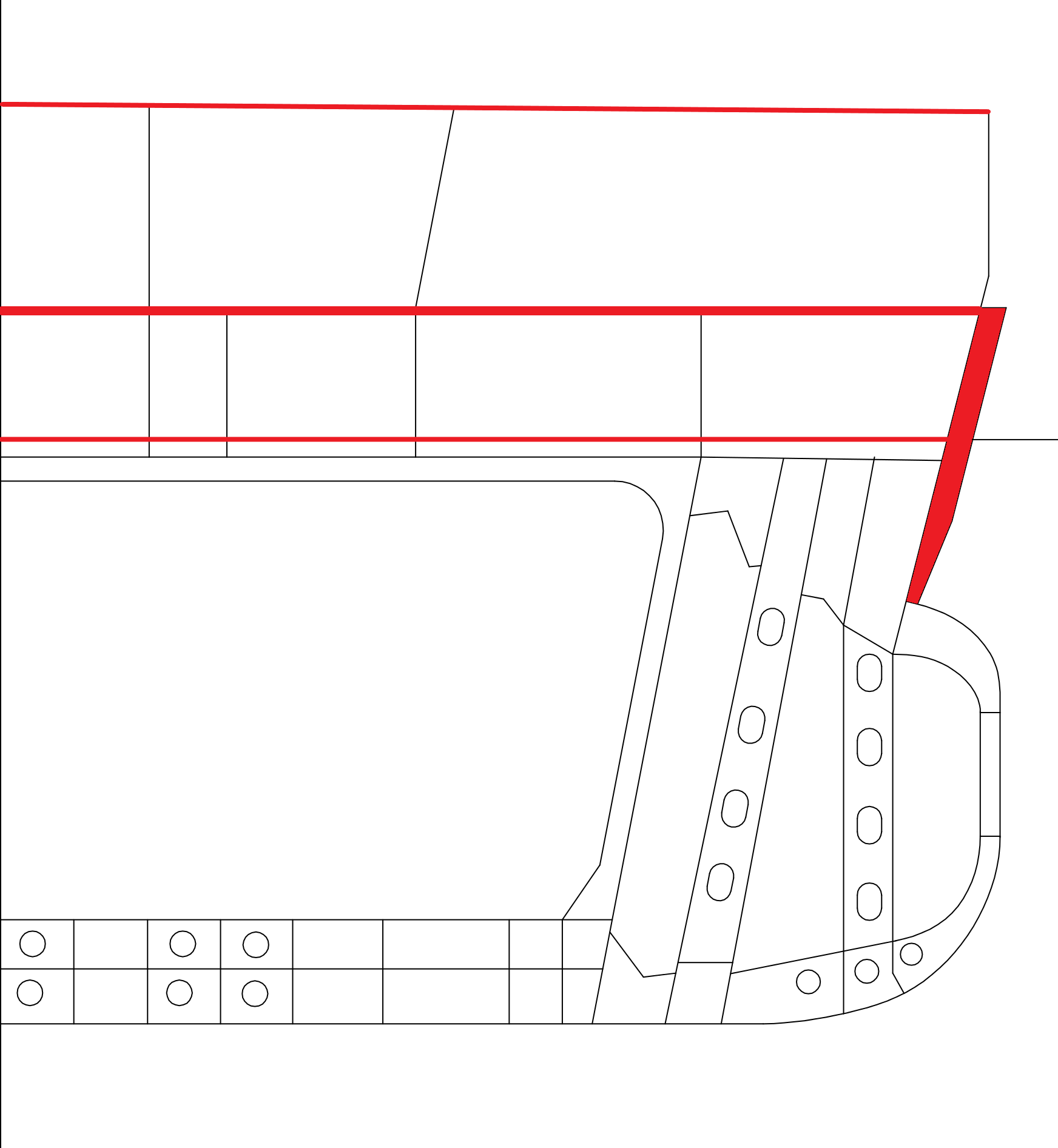
A cross-section of the North Carolina class
A few more tweaks were made before the ships were laid down. The belt was thickened to 12", making the inner edge of the immune zone 20,000 yards, and the slope increased to 15°. Turret 2 was raised enough to allow it to fire over Turret 1, which also allowed the turrets to be moved closer together. The secondary armament, originally 6 twin and 4 single 5"/38 mounts, was upgraded to 10 twin mounts. The light AA battery was planned to be 18 .50 cal machine guns and four quad 1.1" machine cannons.
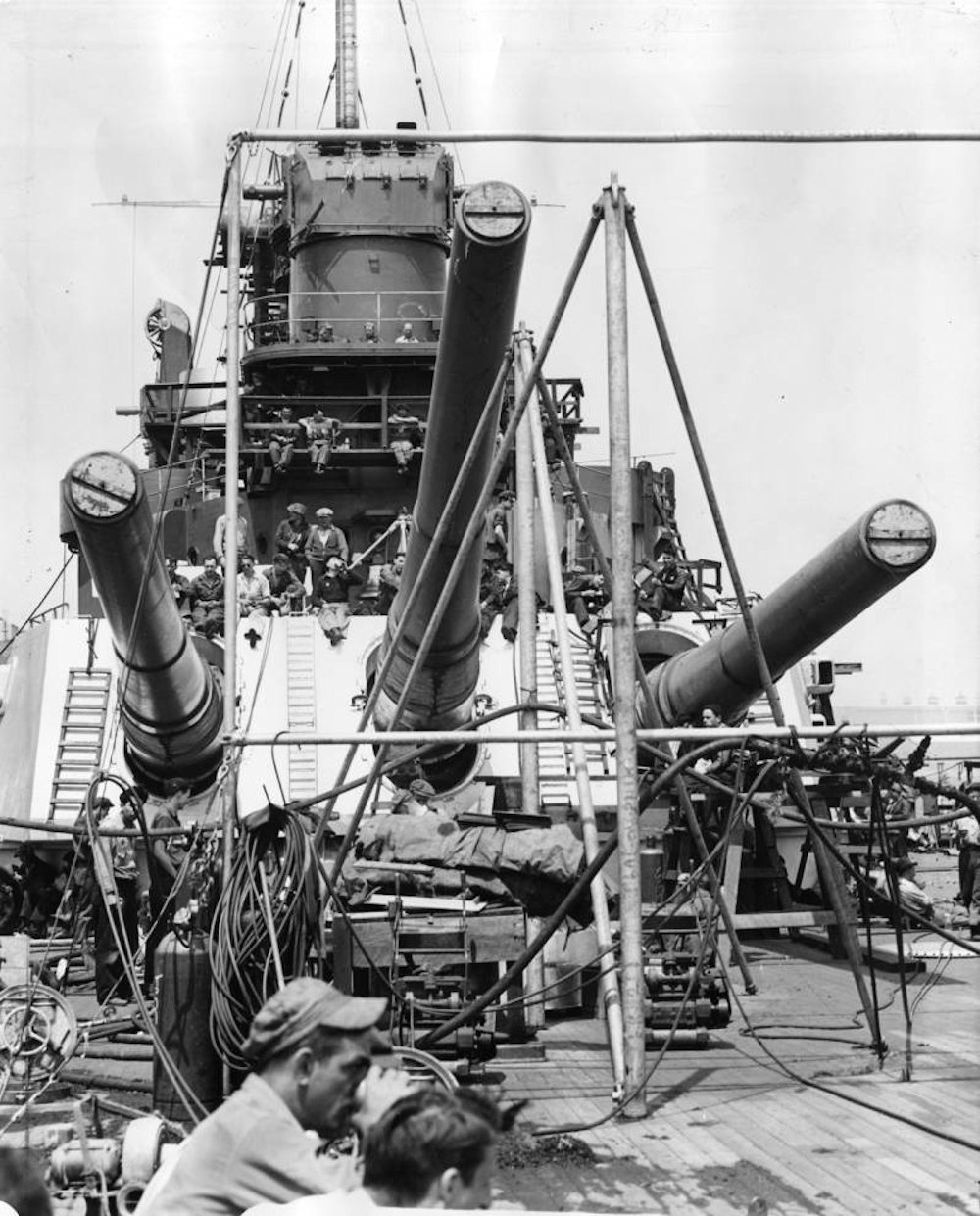
One of Washington's turrets being assembled
The last major change was to the main armament. The escalator clause in the Second London Naval Treaty authorizing 16" guns was theoretically available from early 1936, when Japan refused to sign. However, the strong pacifist movement in the US and the upcoming election made Roosevelt reluctant to invoke it, and the decision to replace the quad 14" turrets with triple 16" ones was not made until November 1937.4 This decision was unanimously backed by all of the interested parties, who apparently believed the improved penetration would more than make up for the loss of guns. This unbalanced the design, and efforts to create a balanced 16" battleship on 35,000 tons would ultimately lead to the follow-on South Dakota class.
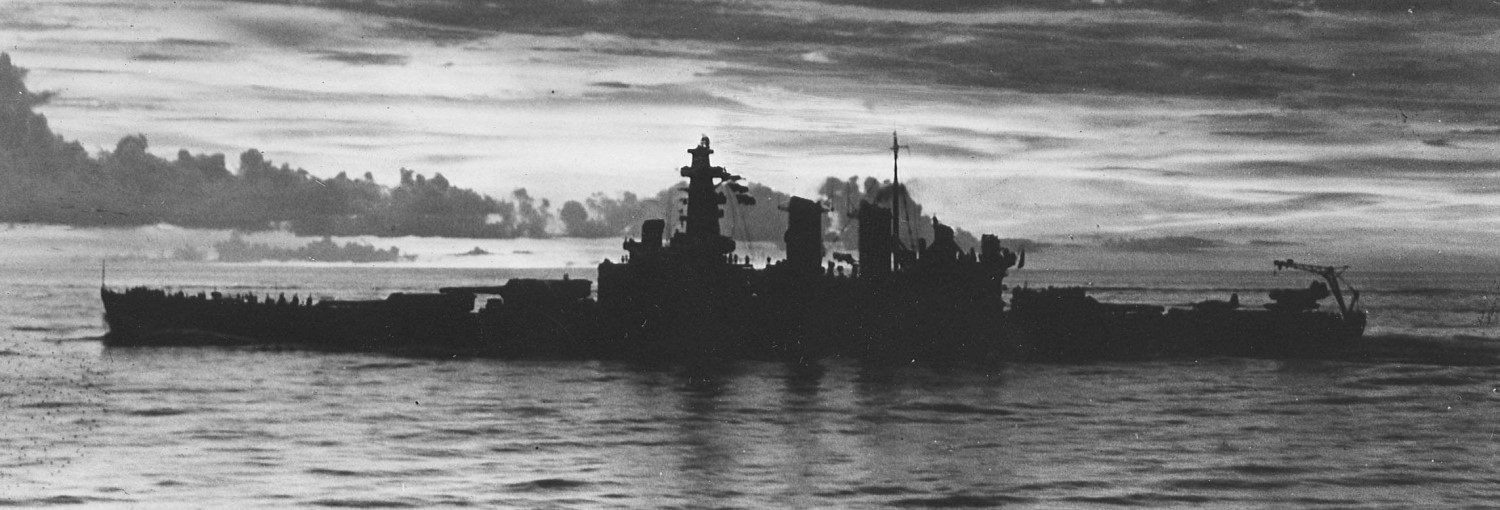
North Carolina off Pearl Harbor
Other innovations included the introduction of longitudinal framing, which meant that the decks were unusually high, and 1" splinter armor on the sides, forcing all spaces to be artificially ventilated because portholes would have left dangerous gaps in it. New high-pressure high-temperature steam plants allowed the designers to fit significantly more power in a given volume. At the stern, the shape of the ship was equally radical. The inner shafts ran through large skegs, designed primarily to provide improved protection, most notably to the magazine of Turret 3 and the shafts on the opposite side of the ship from any torpedo hit.
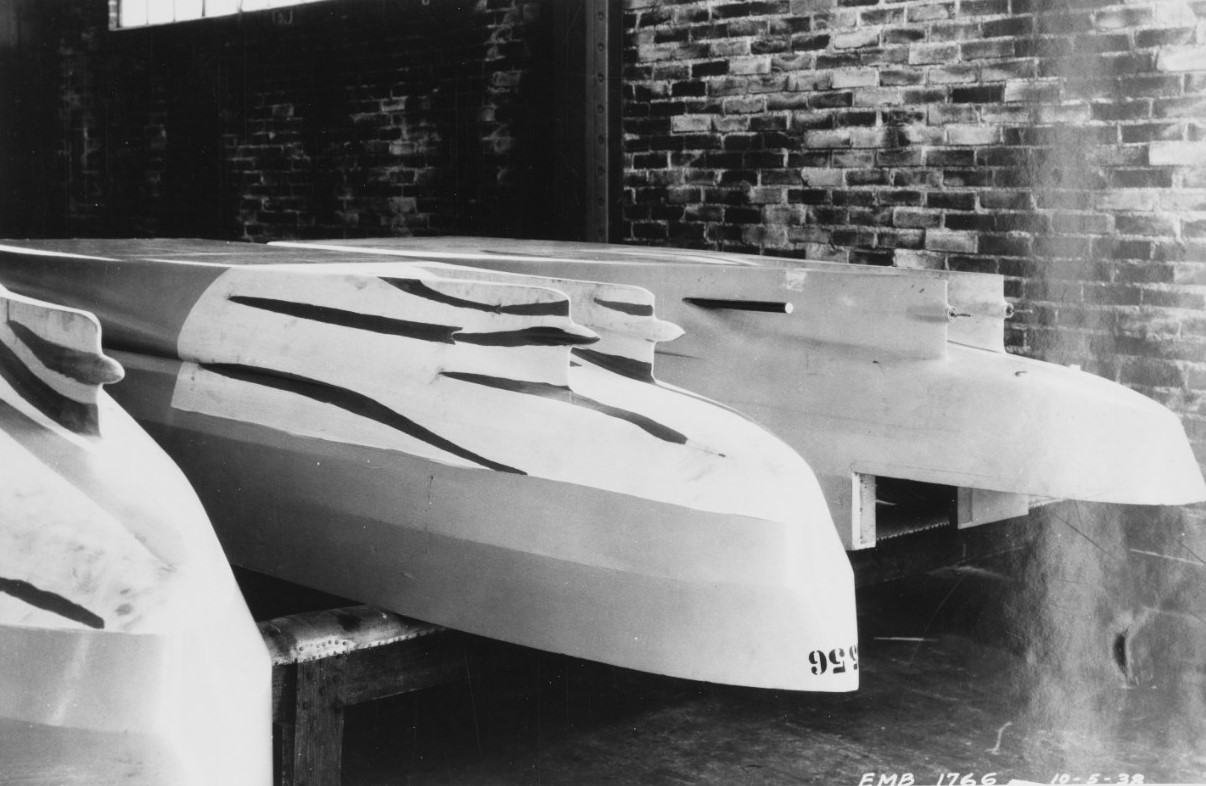
Models of potential hull forms for North Carolina, showing the twin-skeg hull form
Unfortunately, the trials of both ships showed serious problems with their unique hull forms, as severe longitudinal vibrations appeared at speed above 23 kts. These were the result of a complex interaction between the propellers, shafting, machinery and hull structure, and there was serious concern that the same problem could imperil the follow-on South Dakota and Iowa classes, rendering the sacrifices made for speed worthless.5 Even worse, the vibration rendered the aft director nearly useless. Engineers quickly set to work to solve the problem, but their changes had to be tested at sea. North Carolina made so many day trips in and out of New York harbor that she was nicknamed the "Showboat". Eventually, the problems were solved by changing the propellers, which moved the vibrations produced in the shafts away from the resonant frequencies of the structure.6 Even with these changes, the aft director still needed extra bracing, which is visible in pictures of these ships.
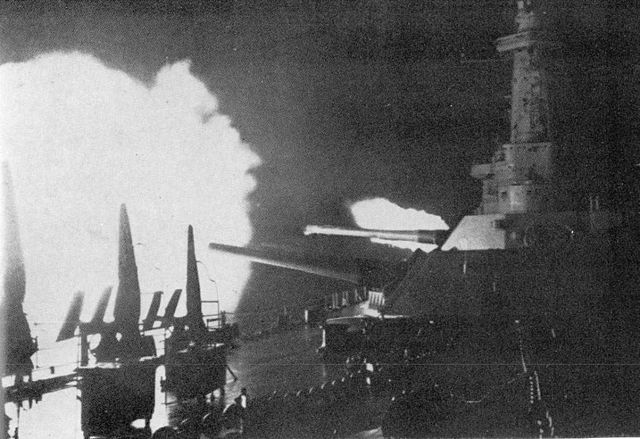
Washington engages Kirishima
North Carolina had a fairly undistinguished war, most notable for being torpedoed during the battle for Guadalcanal, the only time that happened to one of the American treaty battleships. Washington became the only one of the treaty battleships to sink an enemy battleship in combat when she battered the Japanese Kirishima into oblivion off Guadalcanal, as well as compiling an excellent war record in both the Atlantic and Pacific. Sadly, she was scrapped, but North Carolina lives on as a museum in Wilmington.
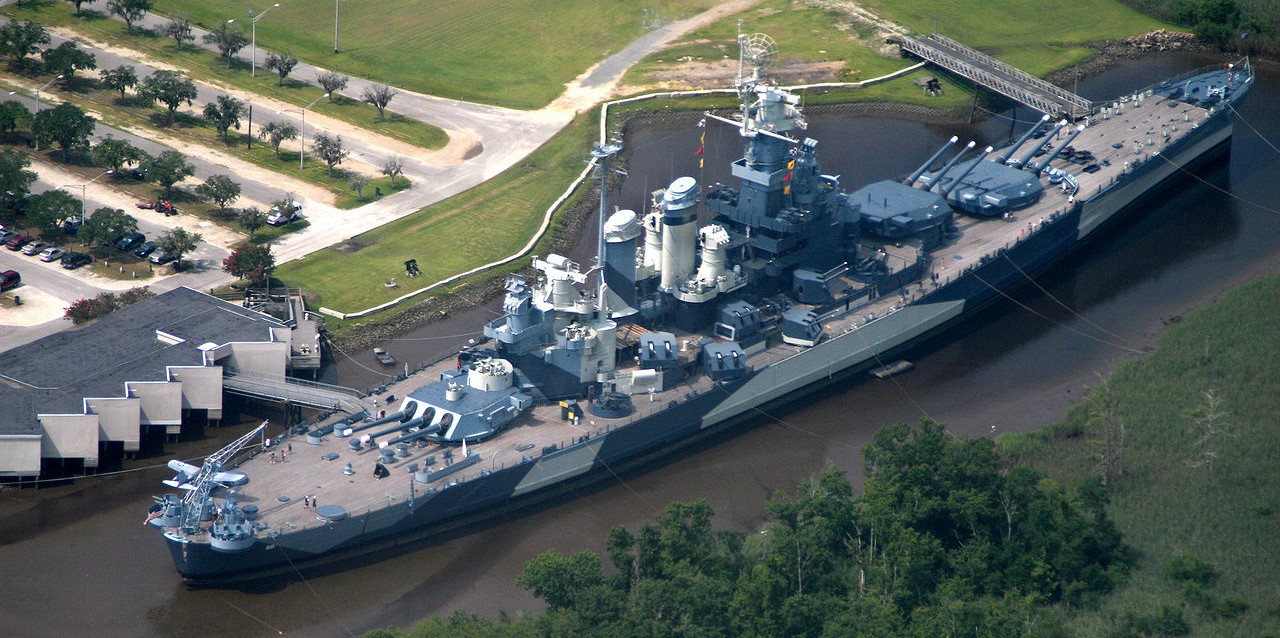
North Carolina today
While the North Carolina was a solid design, somewhat better armed but with worse protection than the King George V class, the USN was not satisfied with the result. They thought they could produce a ship balanced against 16" gunfire on 35,000 tons. It would be a difficult and risky undertaking, but it paid off handsomely. The next American treaty battleships would be the finest of that breed, the South Dakotas.
1 The US wanted a fixed fraction of the waterline protected by the belt, which removed any savings from a Nelson arrangement. ⇑
2 Many of the earlier schemes had numbers like VI-A. ⇑
3 16" guns had been examined, but were discarded due to the negotiations in London. ⇑
4 For reasons I have not been able to figure out, this apparently did not delay construction very much. In Britain, turrets were the pacing item in much battleship construction, to the point that Vanguard was built to take advantage of existing turrets. Both this case and the changes to the guns of the Iowas suggest this was not the case with American construction. ⇑
5 Ultimately, the other classes would not have nearly the same problem, but modeling of vibration has come a long way since WWII. ⇑
6 They were completed with four-bladed props on the inboard shafts and three-bladed props on the outboard shafts. These were initially swapped, and the three-bladed props were later replaced with five-bladed ones. ⇑

Comments
(The 1916-south-dakota article linked to this one, but this doesn't link to the followup 1939-south-dakota article.)
Finally getting around to reading the archives. Thanks for providing this info for those of us who don't have time to read a dozen books on the topic.
The reason is pretty simple. I do forward links at the same time as I do all of the other link updates, a year after the post is first published. The topical index is updated weekly, and the Design tag has all of the ship/class design posts indexed.
North Carolina earned the most Battle Stars of any BB in WWII. Her performance at Eastern Solomans was remarkable considering she had an early war AA fit with no 40mm guns fitted. The No Carolinas were retained in service after WW2 due to better habitability than the SoDaks. She shot down 26 planes confirmed and assisted in 40 more over the course of the war. I would say that was a fairly distinguished career.
There's a lot of ground to cover in one of these, and that sometimes means summarizing things I'd like to go over in more detail if I had time and space.
Actually, no. DANFS credits North Carolina with 12 stars and both Washington and South Dakota with 13.
As for retention in service, not so much. North Carolina and Washington went into reserve in June 1947, while the SoDaks were Jan-Mar. Given the drawdowns of the time, it's possible that they were slated for longer retention at some point, but I don't want to spend a bunch of time digging through Friedman right now to check.
Was any consideration given to making the NCs turbo-electric? Was it simply too tonnage-inefficient, or had electric drive fallen out of favor for other reasons by then?
I think there was a little bit, but it was basically a tonnage issue. I'm not sure how much was inherent in TE as a concept, and how much was due to gearing getting all the R&D money in the interwar years. I suspect the second, but can't prove it.
The ship is worth visiting in Wilmington. Can't say how it stacks up against other museum ships, but I enjoyed it. When I went last, summer of 2018, the facilities around the ship seemed a little worse for the wear compared to what I remember when I went as a kid ~20 years ago. I got the impression that it was due to budget issues. The major drain seemed to be construction of a wall around where the ship has been sunk into the mud, the stated purpose of which was to stop wave action that had been wearing away at the hull. Regardless, its well worth the $14.00 if you are in the area.